
The U.N. Food and Agriculture Organization has declared 2020 to be the International Year of Plant Health. APHIS, U.N. FAO, and others planned celebratory events — most now postponed.
The designation prompts consideration of whether the current global phytosanitary system – created in 1995 – is succeeding in preventing movement of invasive plant pests and invasive plants. Join me in this evaluation!
I focus on evaluating the most widespread invasive pests killing trees – and the pathways on which they travel. Some of the most damaging tree pests, of course, were moved around the world decades ago. But too many have been transported after the modern plant health system was developed in the mid-20th Century with the adoption of the original International Plant Protection Convention (IPPC) in 1951.
Of course, this is also the period when trade volume exploded, resulting in new source countries, new products, and new technologies that facilitated newly rapid movement of goods and accompanying pests. See my earlier blog here and the book by Marc Levinson, The Box: How the Shipping Container Made the World Smaller and the World Economy Bigger. It is well-documented that rising trade volumes, new trade connections, new products have and will continue to exacerbate unintended movement of species (Seebens et al., 2018).
The phytosanitary regime was massively revised in the mid-1990s through adoption of the World Trade Organization and the Agreement on Sanitary and Phytosanitary Standards (SPS Agreement). Two principal changes were to constrain individual countries’ freedom to establish their own phytosanitary regulations and to require evidence of risk rather than allowing action on the basis of “if in doubt, keep it out”. I have written a critique of the new system in Fading Forests II. See Chapter 3, available here.
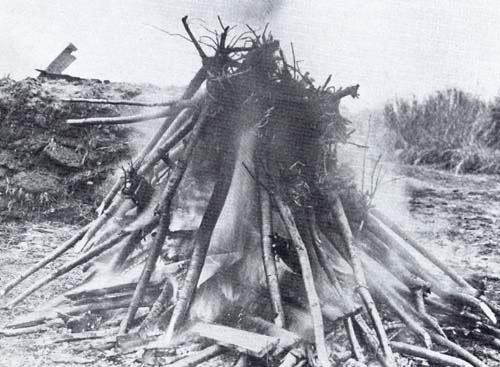
Washington, D.C. 1912
Has the new regime allowed spread of pests, as I predicted in my critique?
Of course, the explosion of global trade has made prevention of species introductions far more difficult. So the rising numbers of introductions cannot be blamed entirely on the SPS Agreement. Still, it is vital to review pest status in order to see whether the SPS Agreement is succeeding in protecting Earth’s flora. Here, I am looking at only one type of bioinvader. Many more types need to be evaluated, even among plants and plant pests. Nor do I pretend that my list is comprehensive even in the category I focus on – tree-killing insects, nematodes, and pathogens.
My definition of “global invader” is an insect, pathogen, or nematode that has been moved from its known or probable place of origin to at least two novel continents or widespread island groups.
Before the SPS Agreement
Of course, many highly damaging forest insects and pathogens spread widely before the eruption of global trade in the second half of the 20th Century. Examples include several pathogens:
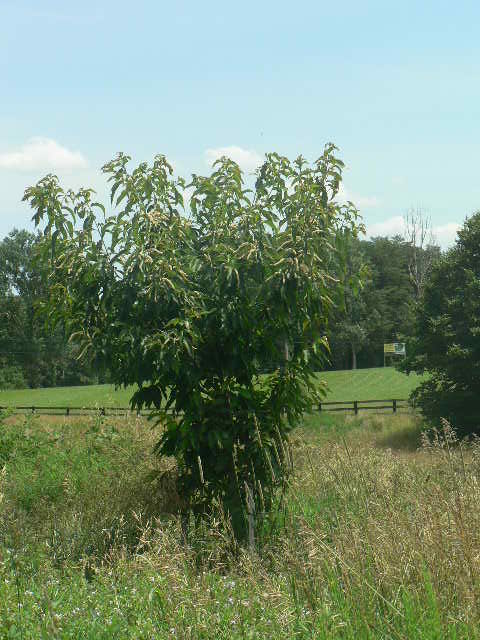
photo by F.T. Campbell
- Phytophthora cinnamomi – Europe, North America, Oceania, South America
- Cryphonectria parasitica – Europe and North America; Oceania probably much later
- Dutch elm disease causal agents Ophiostoma ulmi & novo-ulmi (the vectors are sometimes native insects) – Europe, North America, Oceania;
And some insects:
- Hylastes ater – Oceania, South America, Africa
- Scolytus multistriatus (Dutch elm disease vector) – North America 1909; later to Oceania; mid-20th Century to Africa
There have also been initial introductions of some organisms that would become “global” later:
- Phytophthora lateralis – North America before 1950
During the period 1950 – 1995 –when trade began exploding and countries were adopting their own phytosanitary regulations as allowed under the original IPPC – the following pests were introduced “globally”:
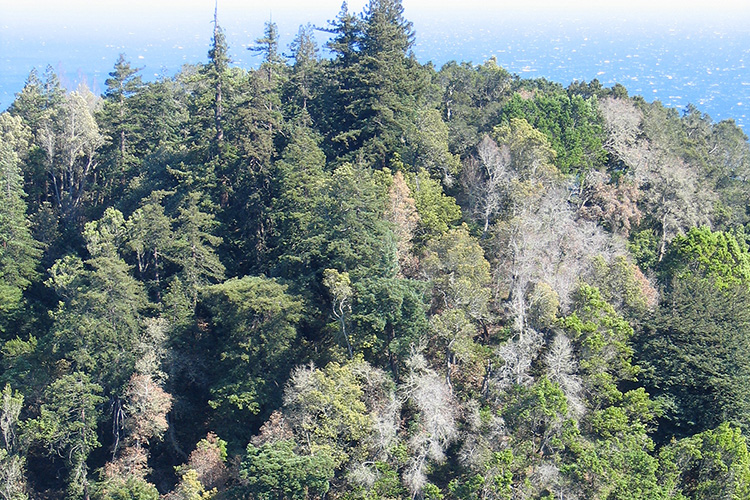
photo by Matteo Garbelotto
- Phytophthora ramorum was introduced from Southeast Asia to Europe and North America.
- Hylurgus ligniperda – Oceania, South America, Africa, Asia after 1950; North America before 1995
- Phoracantha recurva – detected in various geographies after 1995, but almost certainly introduced to North America, South America, Europe, Africa, and Oceania before that date
- Palm pests – red palm weevil (Rhynchophorus ferrugineus) to most areas of the Old World and Oceania where palms grow; coconut rhinoceros beetle (Oryctes rhinoceros) around Africa, Mauritius, Reunion; Oceania;
Again, there were initial introductions of numerous insects in wood packaging and on “plants for planting” that would expand to “global” ranges after 1995:
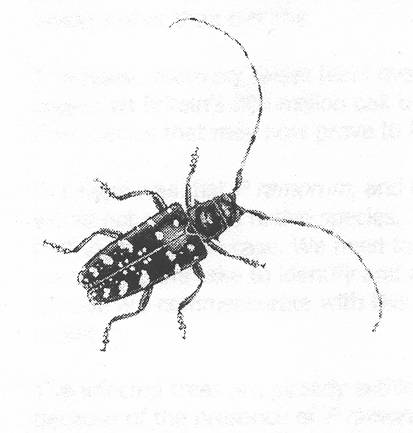
- To North America: Anoplophora glabripennis;, Agrilus planipennis; Austropuccinia psidii; Phoracantha recurve; Glycaspis brimblecombei
- To Asia: Pine wood nematode Bursaphelenchus xylophilus
- To Oceania, South America – Sirex noctillio;
After the SPS Agreement
There has been an apparent explosion of spread since adoption of SPS Agreement in 1995. No doubt these introductions were made possible by the concurrent explosion of trade volumes and more pest-friendly shipping practices (e.g., use of shipping containers and more rapid transportation). The principal vector appears to be plants for planting. About 50% of new plant pathogen invasions are associated with plants for planting (Jimu et al. 2016). Wood packaging is a strong second vector.
Tree-killing pests of which I am aware that have apparently spread globally after 1995 include:
Insects
Aulacaspis ysumatsui – North America, Caribbean, Pacific Ocean islands, Oceania, Africa, Europe, various islands off Southeast Asia that are probably outside original range
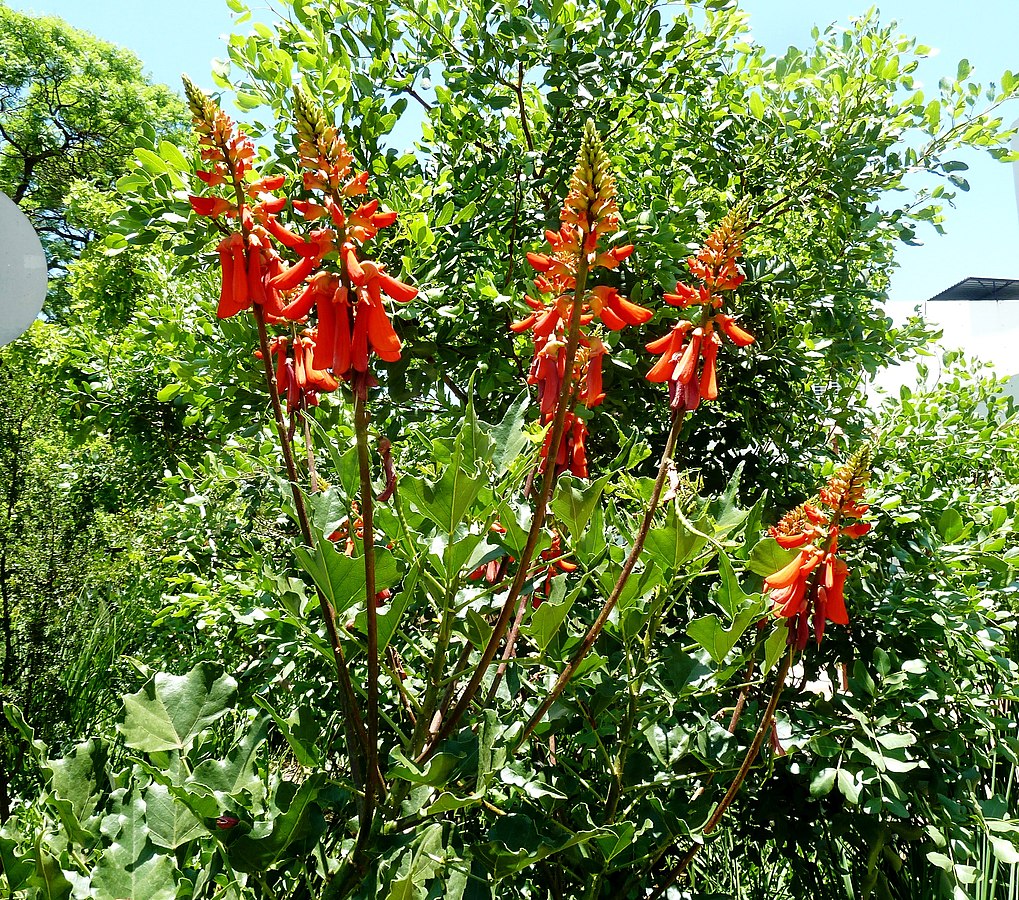
vulnerable to Euwallacea / Fusarium complex
Quadrastichus erythrinae – North America, Southeast Asia, islands in the Indian and Pacific oceans
Euwallacea fornicatus complex, esp. Euwallacea whitfordiodendrus and E. kuroshio and their Fusarium symbionts Fusarium euwallaceae, Graphium euwallaceae, & Paracremonium pembeum – North America, Africa
Several insects that attack Eucalyptus have been widely introduced to areas where plantations of these species have been planted, e.g.,
- Blue gum chalcid wasp or eucalyptus gall wasp Leptocybe invasa – throughout Africa, the Middle East, Asia, the Pacific Region, Europe, South America, Mexico, and the United States [CABI]
- Red gum lerp psyllid (Glycaspis brimblecombei) Europe 2009 [EPPO]
- Eucalyptus snout beetles Gonipterus spp complex à two species introduced to five continents (Schroder et al. 2019).
- Eucalyptus gall wasp(Ophelimus maskelli) – Mediterranean Region, the Middle East, South Africa, Europe, U.S., New Zealand [CABI]
Continued spread of species that had been introduced to a single new continent before 1995:
- Pine wood nematode Bursaphelenchus xylophilus – to Europe
- Phytophthora lateralis – to Europe and South America
- Myrtle rust Austropuccinia psidii – to Pacific oceanic islands and Oceania
- Anoplophora glabripennis and A. chinensis – to Europe
- Sirex noctillio – to North America
- Agrilus planipennis – to Russia and western Europe
- Red palm weevil (Rhynchophorus ferrugineus) – to North America (California- eradicated)
- Coconut rhinoceros beetle (Oryctes rhinoceros) – to Pacific islands, e.g., Guam and Hawai`i
I note that several studies have identified large numbers of introduced species in certain categories, although the dates of introduction are uncertain. Some were probably introduced before 1995. Here I cite the following:
- Jung et al. (2015) found 59 putative Phytophthora taxa in forest and landscape planting sites in Europe; none had been detected by inspectors at the European Union borders.
- Jimu et al. (2019) report global spread of Eucalyptus pathogens carried by the trade in seed and cuttings to support establishment of new plantations and breeding programs.
- Numerous species of Phytophthora across North America – about 60 species in California native plant nurseries; eleven species in Minnesota (both from Swiecki et al. 2018); Parke et al. (2014) identified 28 Phytophthora taxa in four Oregon nurseries.
- Nine species of Phytophthora associated in urban streetscapes, parks, gardens, and remnant native vegetation in urban settings in Western Australia (Barber et al. 2013).
So What’s the Bigger Picture?
I have blogged frequently about the weaknesses of the international standard governing wood packaging; go here.
Clearly the weaknesses of the international phytosanitary system are not limited to the wood packaging pathway. And I repeat that the phytosanitary system is under severe challenge by trade volumes and practices – at least before the Covid-19 pandemic. Still, it is clear that the international phytosanitary system has failed in achieving its purpose: to provide adequate protection in response to this challenge.
I have two suggestions:
1) I hope that the most affected countries will take action per their authority under Section 5.7 of the SPS Agreement. This allows emergency action to prevent further introductions via the principal pathways and from the geographic origins posing the greatest threats (e.g., China for wood packaging, Southeast Asia for Phytophthora pathogens).
2) I hope further that all the nearly 200 countries that are parties to the SPS Agreement and the IPPC will rapidly institute an analysis of the current phytosanitary system to quickly identify amendments to the agreements that would better enable countries to protect their plants from non-native pests.
SOURCES
Barber, P.A., T. Paap, T.I. Burgess, W. Dunstan, G.E.St.J. Hardy. 2013. A diverse range of Phytophthora species are associated with dying urban trees. Urban Forestry & Urban Greening 12 (2013) 569-575
Jimu, L., M. Kemler, M.J. Wingfield, E. Mwenje, and J. Roux. 2016. The Eucalyptus stem canker pathogen Teratosphaeria zuluensis detected in seed samples. Forestry 2016 89 316-324 https://academic.oup.com/forestry/article/89/3/316/1749105
Jung, T., L. Orlikowski, B. Henricot, P. Abad‐Campos, A. G. Aday. O. Aguín Casal, J. Bakonyi, S. O. Cacciola, T. Cech, D. Chavarriaga, T. Corcobado, A. Cravador, T. Decourcelle, G. Denton, S. Diamandis, H. T. Doğmuş‐Lehtijärvi, A. Franceschini, B. Ginetti, S. Green, M. Glavendekić, J. Hantula, G. Hartmann, M. Herrero, D. Ivic, M. Horta Jung, N. Keca, V. Kramarets, A. Lyubenova, H. Machado, G. Magnano di San Lio, P. J. Mansilla Vázquez, B. Marçais, I. Matsiakh, I. Milenkovic, S. Moricca, Z. Á. Nagy, J. Nechwatal, C. Olsson, T. Oszako, A. Pane, E. J. Paplomatas, C. Pintos Varela, S. Prospero, C. Rial Martínez, D. Rigling, C. Robin, A. Rytkönen, M. E. Sánchez, A. V. Sanz Ros, B. Scanu, A. Schlenzig, J. Schumacher, S. Slavov, A. Solla, E. Sousa, J. Stenlid, V. Talgø, Z. Tomic, P. Tsopelas, A. Vannini, A. M. Vettraino, M. Wenneker, S. Woodward, A. Peréz‐Sierra. 2016. Widespread Phytophthora infestations in European nurseries put forest, semi-natural and horticultural ecosystems at high risk of Phytophthora disease. Forest Pathology. November 2015.
Levinson, M. The Box: How the Shipping Container Made the World Smaller and the World Economy Bigger Princeton University Press 2008
Schroder, M. Slippers, B., Wingfield, M.J., Hurley, B.P, Invasion history and management of Eucalyptus snout beetles in the Gopterus scutellatus species complex. 2019. Journal of Pest Science
Parke, J.L., B.J. Knaus, V.J. Fieland, C.Lewis, and N.J. Grünwald. 2014. Phytophthora Community Structure Analyses in Oregon Nurseries Inform Systems Approaches to Disease Management. Phytopathology Vol. 104, No 10.
Schroder, M. Slippers, B., Wingfield, M.J.,Hurley, B.P, Invasion history and managementof Eucalyptus snout beetles in the Gopterus scutellatus species complex. 2019. Journal of Pest Science
Seebens, H., T.M. Blackburn, E.E. Dyer, P. Genovesi, P.E. Hulme, J.M. Jeschke, S. Pagad, P. Pyse, M. van Kleunen, M. Winter, M. Ansong, M. Arianoutsou, S. Bacher, B. Blasius, E.G. Brockerhoff, G. Brundu, C. Capinha, C.E. Causton, L. Celesti-Grapow, W. Dawson, S. Dullinger, E.P. Economo, N. Fuentes, B. Guénard, H. Jäger, J. Kartesz, M. Kenis, I. Kühn, B. Lenzner, A.M. Liebhold, A. Mosen, D. Moser, W. Nentwig, M. Nishino, D. Pearman, J. Pergl, W. Rabitsch, J. Rojas-Sandoval, A. Roques, S. Rorke, S. Rossinelli, H.E. Roy, R. Scalera, S. Schindler, K. Stajerová, B. Tokarska-Guzik, K. Walker, D.F. Ward, T. Yamanaka, and F. Essl. 2018. Global rise in emerging alien species results from increased accessibility of new source pools. PNAS Plus. Available at http://www.nature.com/articles/ncomms14435
Swiecki, T.J., E.A. Bernhardt, and S.J. Frankel. 2018. Phytophthoraroot disease and the need for clean nursery stock in urban forests: Part 1 Phytophthora invasions in the urban forest and beyond. Western Arborist Fall 2018.
Wondafrash, M., B. Slippers, A. Nambazimana, I. Kayumba, S. Nibouche, S. van der Lingen, B.A. Asfaw, H. Jenya, E.K. Mutitu, I.A. Makowe, D. Chungu, P. Kiwuso, E. Kulimushi, A. Razafindrakotomamonjy, P.P. Bosu, P. Sookar & B.P. Hurley. 2020. Distribution and genetic diversity of five invasive pests of Eucalyptus in sub-Saharan Africa. Biological Invasions Vo. 22, pp. 2205-2221 (2020)
Coconut rhinoceros beetle – https://www.cabi.org/isc/datasheet/37974 + websites for Guam and Hawai`i
Red palm weevil – https://cisr.ucr.edu/invasive-species/red-palm-weevil
Posted by Faith Campbell
We welcome comments that supplement or correct factual information, suggest new approaches, or promote thoughtful consideration. We post comments that disagree with us — but not those we judge to be not civil or inflammatory.
For a detailed discussion of the policies and practices that have allowed these pests to enter and spread – and that do not promote effective restoration strategies – review the Fading Forests report at http://treeimprovement.utk.edu/FadingForests.htm